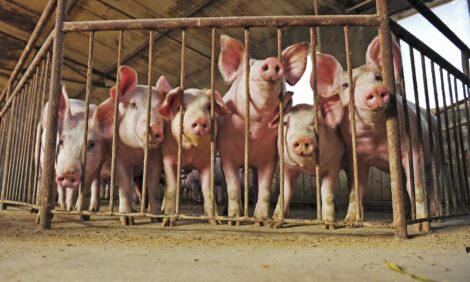



US researchers seek more nuanced understanding of PRRSV
The University of Minnesota researchers received USDA fundingA group of University of Minnesota researchers aims to give scientists a more nuanced look at whether past infection by one genetic variant will provide immunity against another, thanks to new funding from the USDA National Institute of Food and Agriculture, the university said in a news release.
Despite increased biosecurity efforts and a revolving door of new vaccines, porcine reproductive and respiratory syndrome virus (PRSSV) persists. The swine disease costs the US swine industry $664 million annually.
All viruses contain antigenic regions, which are molecular structures on a virus’s surface that, when recognised by the immune system, trigger an antibody response. So a clear picture of how a virus’s genetic sequence translates to antigenic characteristics is critical in order to predict whether infection by one strain of PRRSV will protect against another.
Though genetic sequencing allows diagnostic laboratories to keep track of the genetic differences between viral variants, scientists currently lack the tools to visualize and interpret the sequencing data as it relates to the differences between the antigens associated with each variant.
But being able to see those differences is critical for on-farm management of PRRSV outbreaks, to anticipate a new viral variant, and even to develop new vaccines.
The USDA-NIFA funding will allow a team led by Kimberly VanderWaal and Maxim Cheeran, in the Department of Veterinary Population Medicine, to run tests on the latest PRRSV variants to determine the parts of the virus that interact with the host immune system, and then create a map showing the theoretical antigenic differences between viral sequences. The predicted antigenic differences between variants tells researchers whether past infection by one variant is likely to protect against future infection by another.
The team will incorporate machine learning in order to build algorithms that can predict physical antigenic characteristics from genetic sequences. Following that they will create a visual dashboard to track how variants and their predicted antigens evolve so that pork producers, clinicians, and researchers can better understand the relationship between the genetic sequences and the antigenic properties of PRRSV they encounter in routine testing.
The researchers are partnering with the University's Veterinary Diagnostics Laboratory to access samples from a broad swath of regional production systems, enhancing the scientists’ partnership with and service to the swine industry.
The research will help scientists and stakeholders better anticipate variants and try to get ahead of them with vaccines. For PRRSV, that can mean greater control of a consequential infectious disease and, most importantly, improved swine health.








